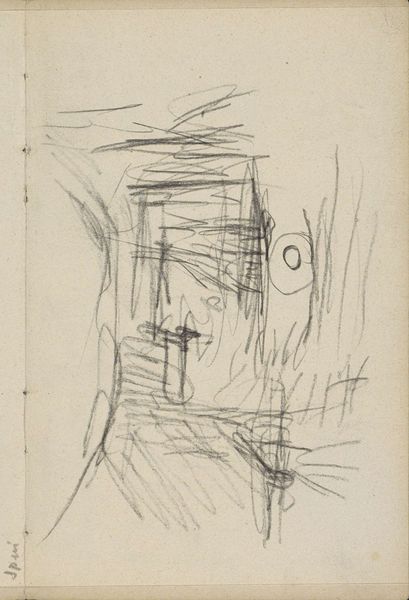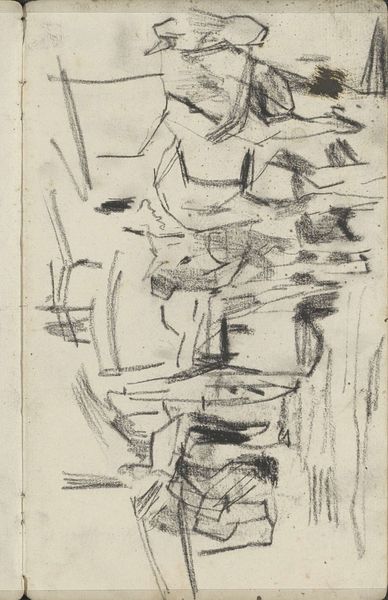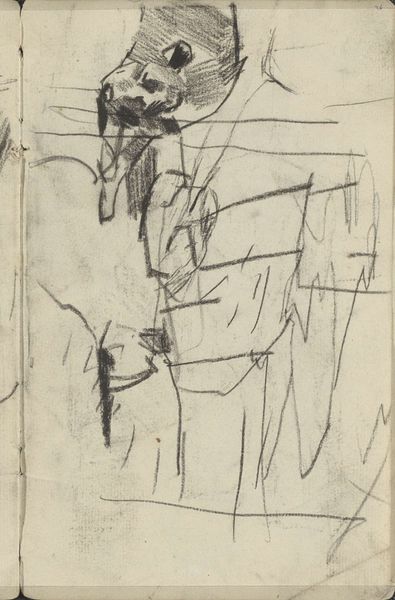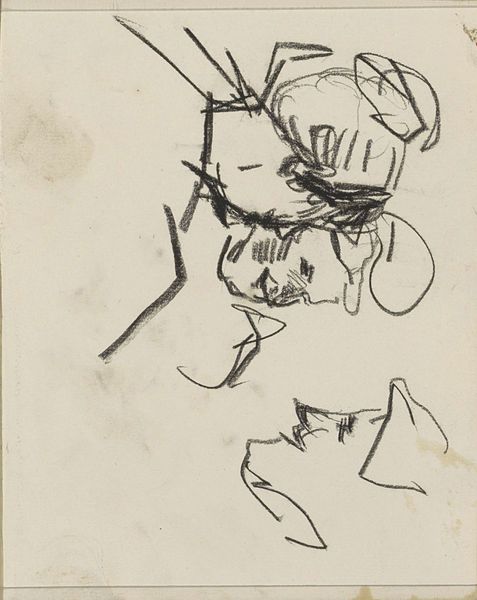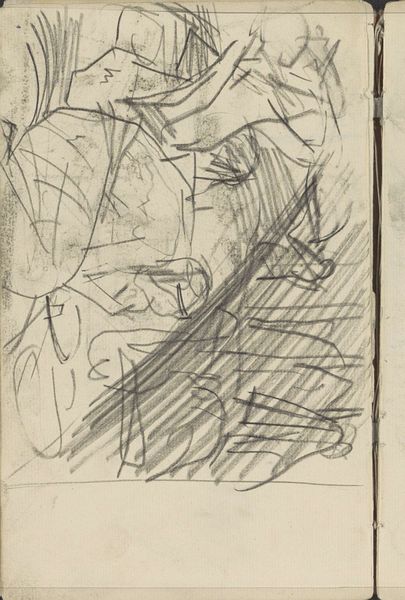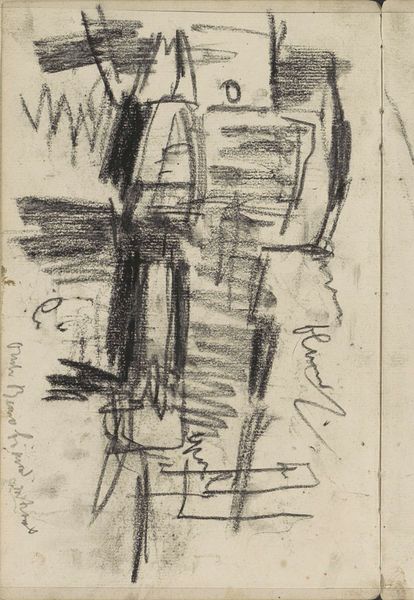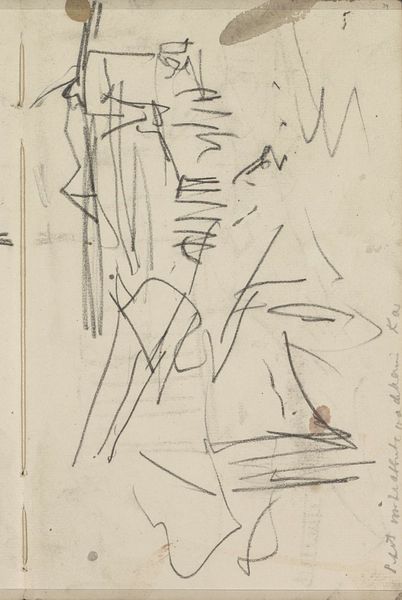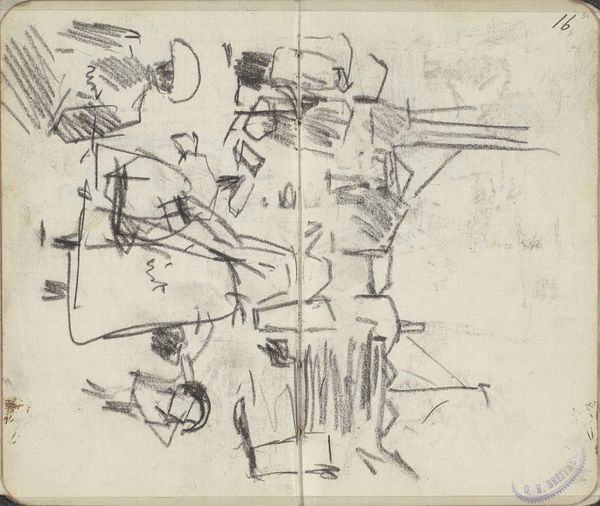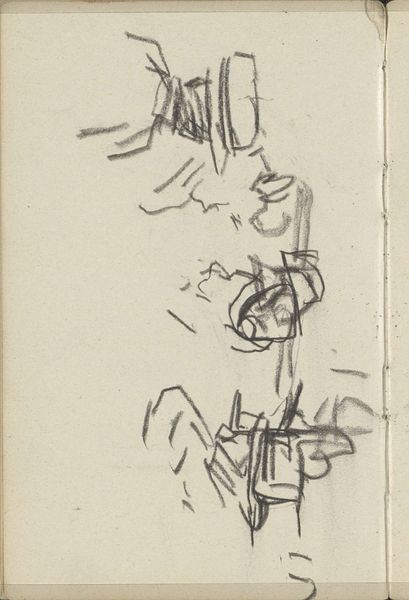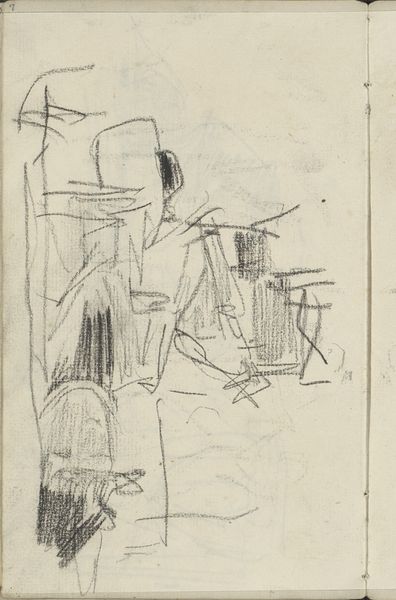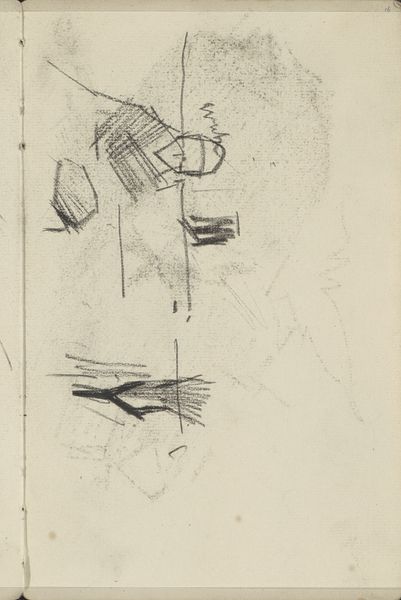
#
quirky sketch
#
pen sketch
#
personal sketchbook
#
idea generation sketch
#
sketchwork
#
pen-ink sketch
#
sketchbook drawing
#
storyboard and sketchbook work
#
sketchbook art
#
initial sketch
Copyright: Rijks Museum: Open Domain
Editor: So, here we have George Hendrik Breitner’s “Studieblad, onder andere met figuren,” created sometime between 1886 and 1898. It appears to be a sketchbook page filled with rapid pen and ink sketches. There's a real energy in these marks; you can almost feel the artist's hand moving across the page. What strikes you when you look at this piece? Curator: Well, seeing this work, I am drawn immediately to the labour involved in its creation. It's not about some divine inspiration, but rather the everyday practice and production of art. This is work, plain and simple. How does this object as a mass produced notepad connect with your perception of the figures represented, as subjects themselves engaged in work perhaps? Editor: That's interesting! I hadn’t thought about the connection between the material and the figures depicted in that way. It's fascinating to think of the sketchbook itself as a product of labor, and how that might influence the artist's process and the final image. Curator: Exactly! Think about the socio-economic context. Breitner was working during a period of immense industrial and social change. How does that context potentially challenge conventional understandings of what is valued, as labor? How does this challenge distinctions between fine art and more commonplace activities like sketching? Editor: That does open up a lot of questions. It seems much more democratic than a formal painting, almost like a visual record of everyday life, created with accessible materials. Curator: Precisely! And what does that say about access to art materials, and by extension, artistic expression during that time? Editor: It's made me consider how seemingly simple materials and artistic practice were closely tied to their cultural moment. Curator: Indeed. This piece really underscores the relationship between art, labor, and the society that produces both.
Comments
No comments
Be the first to comment and join the conversation on the ultimate creative platform.
